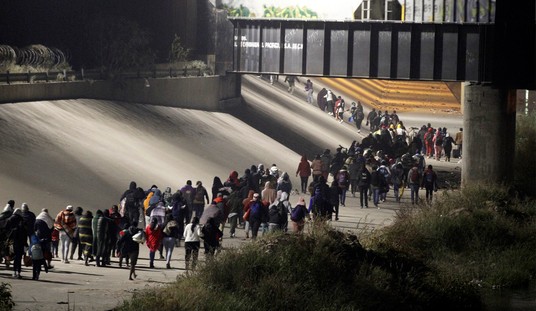Here’s a link to a professionally produced video documentary on the marshes of Agusan province in Mindanao. While my personal interest in the video is that it depicts elements which form part of the true historical backstory of my novel, No Way In, the reader may find it useful as an glimpse not only into Philippine geography, but its society.
As you can readily deduce, the narrator and producer of the video are different from the fishermen of the marsh, who are the subjects of the story. The film-makers are upper or upper-middle class Filipinos while the subjects of their video documentary are subsistence fishermen or farmers. Night and day. This is evident in two ways. First, the upper class people half-think in English, while the lower class people think in their own dialect.
But that is not the only division on display. One of the curious things about the Filipino society is that few of its inhabitants actually live in a unitary cultural world. This is most obvious in the the modern upper or upper middle class Filipino. Members of that social stratum literally cogitate in several languages. It is impossible for them to compose a single paragraph, let alone a series of paragraphs in a single language. They need one or more.
If you watch the video it is obvious how the narrator switches, effortlessly, between Tagalog and English, mixing the sentences and words as if there were no distinction between the two. This is not contrived. She is not translating for the camera. This is how narrator actually sounds in ordinary speech. People from this strata of society will actually find it difficult, perhaps impossible, to express themselves in a single language. Give them both and they are happy. Confine them to one and they would be completely at sea.
The actual language of the upper and upper-middle class Filipino is the union set of both a special kind of Tagalog and American English. Both vocabularies and both syntaxes are instantly available in every social situation and they are used almost interchangeably in the stream of consciousness. Taking either of them away is to deprive the speaker of half his power of expression.
The cultural context is similarly fragmented. It is a mistake to think that Filipinos are superficially Christian or superficially anything. Say rather that they’ve authentically lumbered themselves with more than one culture, sometimes three or more.
This is not true of the marsh folk. They might only have one and a half. And that makes them simpler. The casual viewer may miss the fact that the upper class visitors from Manila are almost as alien to the people of the marsh, as would be for example, a guy from Yakima, Washington. But if you listen closely, notice the people of the lake speak Cebuano while the visitors from Manila speak the imperial Tagalog of Luzon.
Not that it matters. The measure of social distance is trust. What really counts is whether you are a good guy or a bad guy. In the Philippines people judge foreignness by other criterion than difference in culture. It was once my business to wander among whatever tribe you can think of, and I was often taken for an Amerikano rather than a Manila visitor, and much else in between.
To my surprise, many of the uplanders saw the Filipino lowlander as carpetbaggers and landgrabber, and were far more trusting of the gringo, because all the gringos they had ever met were either priests, Peace Corps Volunteers or aid workers. They had never met a gang-banger from Chicago or an American politician. And from that limited sample they concluded that if you were a foreigner, you were probably better than a lowlander.
And that is what mattered. Handsome was as handsome did. Foreignness, in a country which has many languages and cultures, is mostly a matter of who you can trust.
But even after you know who you can trust, you have to figure out what someone is good for. The other piece of context which doesn’t come through explictly is the mechanical life of that marshland world. The intelligensia may think the globe runs on ideas, but actually it runs on WD-40 and duct tape. Practical skills rule.
Agusan del Sur, in which much of the footage was shot, was once a goldmine of timber and therefore an eminently practical place. There was a time when you could walk across the Agusan River, which was probably about 200 yards wide, on the logs that floated down it. Those days are no more. The forests were annihilated by the politicians, who figured the “national patrimony” was best managed through government and therefore handed the concessions to themselves. But while it lasted it was a world of heavy equipment operators, truck drivers , buckers and fellers and blue collar workers in general, if anyone ever wore a blue collar on a t-shirt. That, plus thousands of armed men.
It was a world of tradesmen. Perhaps that’s true of the world in general. If you really want to know what makes the Philippines tick over, it isn’t the world of the video producers. It’s the universe of people who know how to run the two stroke boat engines, punt their way through the marshes, fish for eel and field strip an M-16. They’ve kept things humming for thousands of years. Thus the other division that you have to look for in the video is who paddles and who rides.
One of the advantages of gringos until recently is that they knew how to paddle. The poor people in the Philippines will only rarely ask an upper class countryman to fix an engine. But they might ask a gringo, back when there were gringos.
Although Mindanao was never a major battlefield, there were some Japanese forces on the Island. One person I knew doesn’t know whether he was born in 1944 or 1945 because his parents were on the run from the Japanese army and they lost track of the months. In one scene in the video, a guide pulls a skull from out of the ground, suggesting that it belonged to a member of the Imperial Japanese Army. I would not be surprised if it did. Many of the sons of Nippon which came to those Islands never returned. The idea that Pacific Theater consisted of combat on tiny coral atolls is a persistent one, but Luzon and Mindanao are completely different kettle of fish. Did the IJA think they could occupy that geography? What were they thinking?
If you watch carefully you’ll notice the video producers are quite surprised to see the “forest”. For example the narrators are moving through the “wonderland” and worrying about the mud, you wonder why. Anybody who has moved through logged over forest, or dense brushland will testify that the route depicted was pretty easy going. In really dense tropical forest you can’t see six feet and to move a mile is the work of a day.
I think Vietnam veterans will know what I mean.
Still, that is nitpicking. The directors did a good job, and have recorded a both a physical and cultural world that is whole in a way that defies stereotypes. The inhabitants of that universe are not derivative. They can be authentically something in a complex kind of way; deeply Western even when they are not, familiar yet not familiar. Reality is complex, as all reality is. Speaking of which, I recently read that Rick Rescorla of We Were Soldiers fame, and later security chief for the financial services firm Morgan Stanley and Dean Witter at the World Trade Center, was originally Cornish and died under all his many flags. He’s an example of complex reality that is simple.
At 8:46 a.m., American Airlines Flight 11 struck World Trade Center Tower 1. Rescorla, following his evacuation plans, ignored building officials’ advice to stay put and began the orderly evacuation of Morgan Stanley’s 2,700 employees on twenty floors of World Trade Center Tower 2, and 1,000 employees in WTC 5. Rescorla reminded everyone to “…be proud to be an American …everyone will be talking about you tomorrow”, and sang God Bless America and other military and Cornish songs over his bullhorn to help evacuees stay calm as they left the building, including an adaptation of the song “Men of Harlech”:
Men of Cornwall stop your dreaming;
Can’t you see their spearpoints gleaming?
See their warriors’ pennants streaming
To this battlefield.
Men of Cornwall stand ye steady;
It cannot be ever said ye
for the battle were not ready;
Stand and never yield!
There’s something comforting in the knowledge he went out that way. For the truth is there’s only one flag all true men live under. It goes by many names, but it is always one and the same.
How to Publish on Amazon’s Kindle for $2.99
The Three Conjectures at Amazon Kindle for $1.99
Storming the Castle at Amazon Kindle for $3.99









Join the conversation as a VIP Member